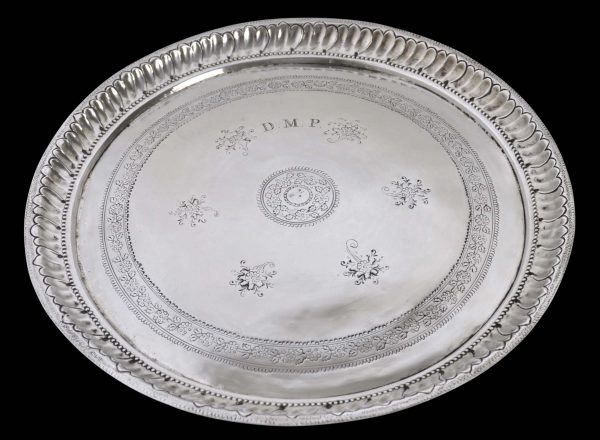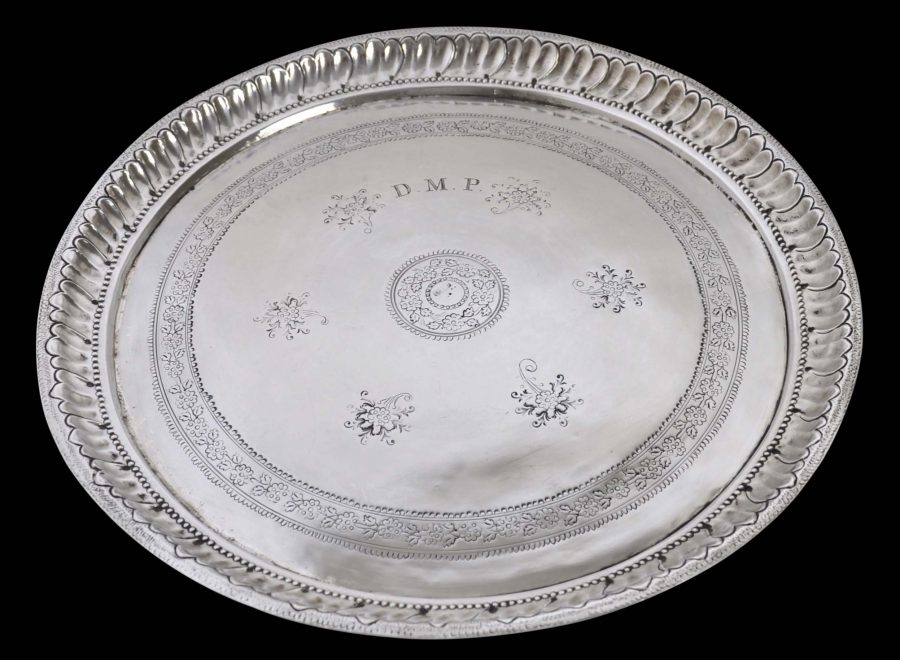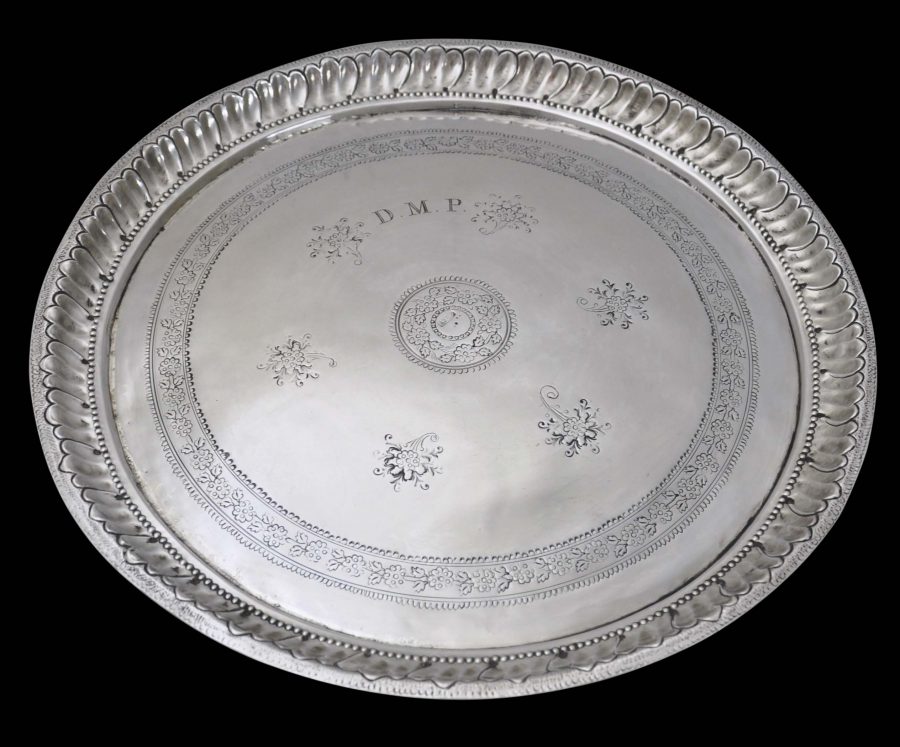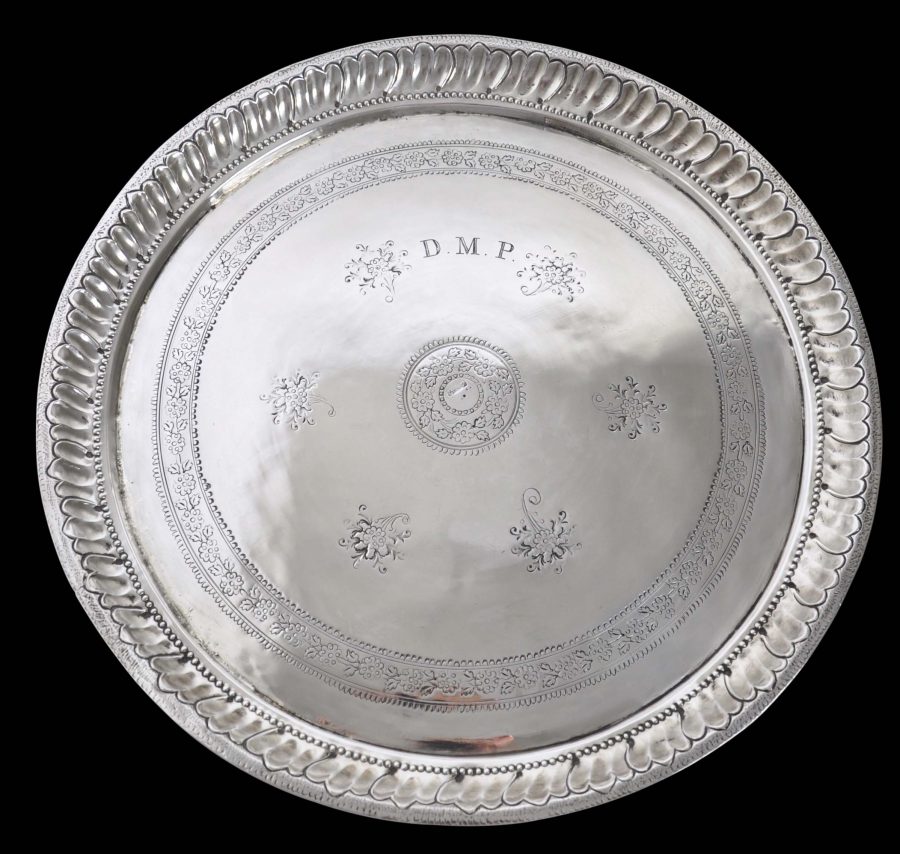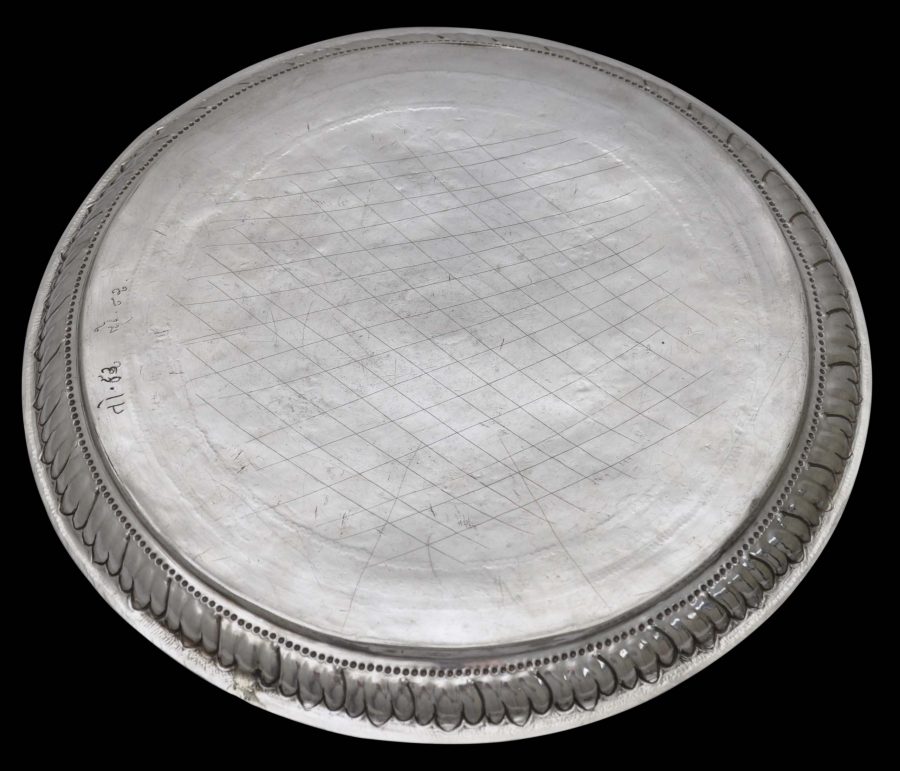This large ritual ses tray is of almost pure silver and is likely to be more pure than sterling silver. Such purity was preferred for silver items to be used in religious Parsi ritual.
The tray was used for all types of ritual in which offerings, condiments and ritual containers needed to be carried and presented. It has a high rim engraved with petal-like motifs. There is a band of flowers and a central roundel similarly engraved. Six sprays of flowers and leaves also are spaced about the tray.
The front of the tray is engraved with the initials ‘D.M.P.’ It is believe that the ‘P’ refers to the surname of the family that owned the tray – ‘Paynter’.
The central roundel also is marked with what is likely to be an a maker’s mark in Gujarati, and the reverse also is marked with two brief sections of Gujarati, most probably these are ownership marks – such marks were used in India by all sorts of groups if they lived in extended family compounds to indicate who owned what. This was important to avoid inheritance disputes.
The reverse of the tray has been hand-scored with a rough cross-hatching pattern.
The tray is in excellent condition.
Parsees subscribe to Zoroastrianism, one of the world’s oldest living religions. It is said to have its origins with Darius, who was crowned king of Persia in 522 BC, and was the first of the Achaemenid kings to be confirmed as a true follower of Zoroaster. Ahura Mazda, proclaimed by Zoroaster as God, was mentioned and celebrated as Creator in many of Darius’ speeches.
Today, probably there are fewer than 125,000 Parsees or Zoroastrians worldwide. Perhaps no more than 80,000 live in Mumbai/Bombay, a city of 14 million people, and no more than 6,000 live in Karachi in Pakistan.
Like the Chinese of Southeast Asia, the Parsees of India and Pakistan are a distinct but exceptionally successful commercial minority. By the nineteenth century, Bombay’s Parsee families dominated the city’s commercial sector, particularly in spinning and dyeing and banking.
Wealth from these activities was put into property so that by 1855, it was estimated that Parsee families owned about half of the island of Bombay. Today, India’s most prominent Parsee family is the Tata Family, founders and owners of India’s most prominent conglomerate the Tata Group.
Well off though they are as a community, the Parsees are dying out. It has been estimated that a thousand Parsees die each year in Mumbai, but only 300-400 are born. Today, one in five Mumbai Parsees is aged 65 or more. In 1901 the figure was one in fifty. Low birth rates are the main factor.
Nonetheless, many vestiges of the Parsees’ contribution to commerce in South and East Asia remain. Apart from India’s giant Tata Group, smaller examples can be seen: small change offices in Hong Kong are known locally as ‘schroffs’ after a common Parsee surname, and in Singapore the road that runs alongside that country’s finance ministry is known as Parsi Road.
References
Cama, S., ‘Parsi crafts: Gifts from Magi’, UNESCO Power of Creativity Magazine, Vol. 2, August 2008.
Godrej, P.J. & F. Punthakey Mistree, A Zoroastrian Tapestry: Art, Religion & Culture, Mapin Publishing, 2002.
Stewart, S. (ed.), The Everlasting Flame: Zoroastrianism in History and Imagination, SOAS, 2013.


